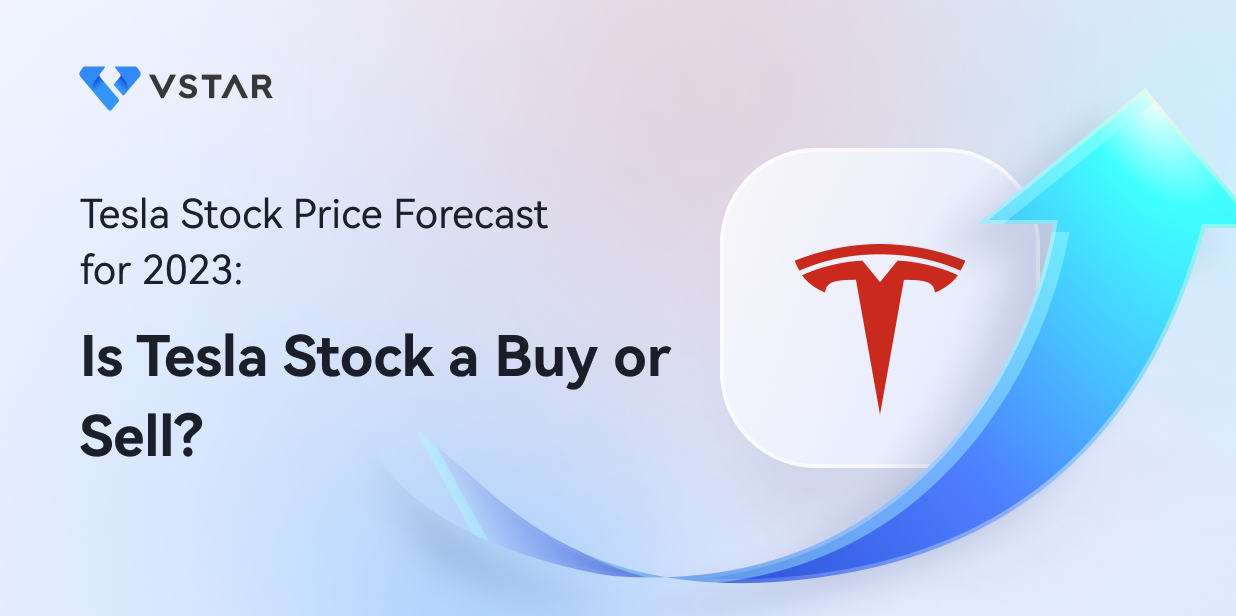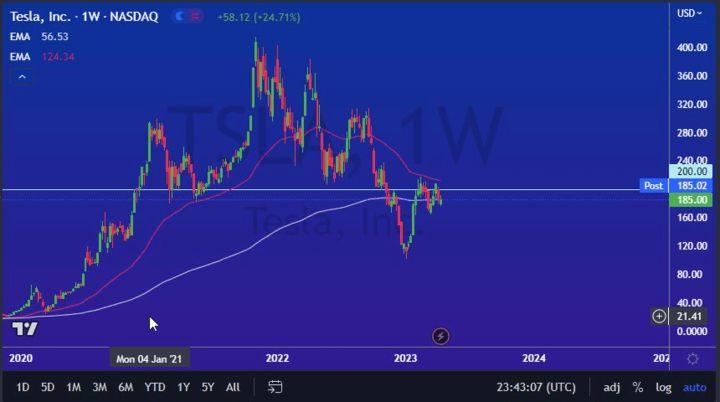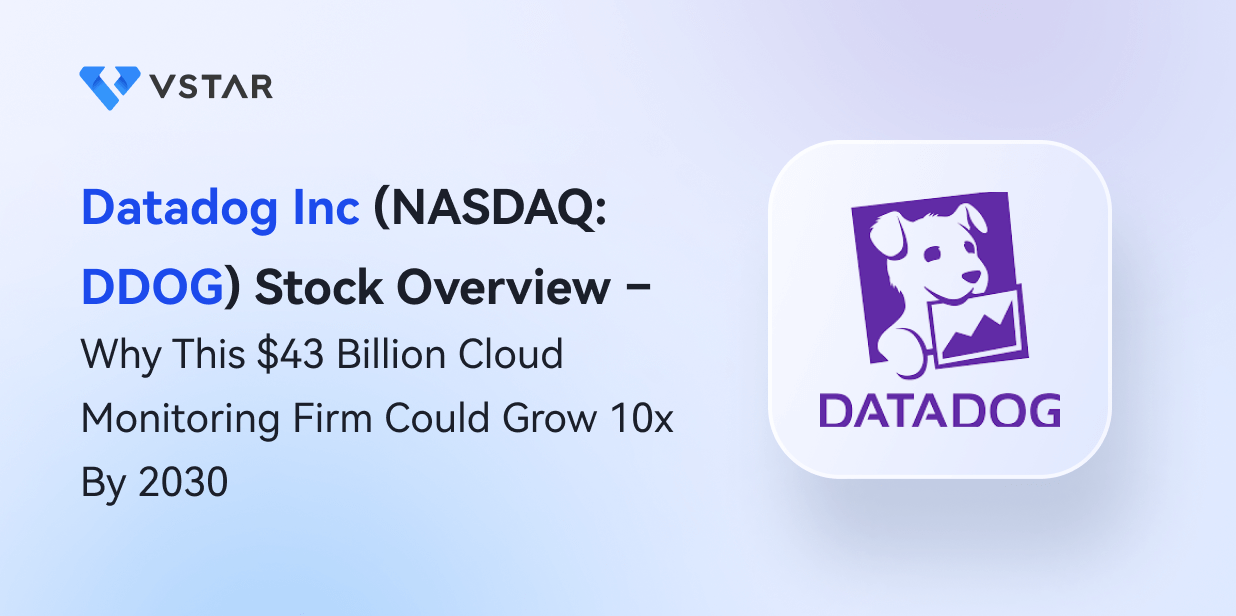Introduction
Elon Musk founded Tesla Inc. in 2003 as an electric vehicle and clean energy company. Tesla is well-known for its high-performance electric vehicles, such as the Model S, Model X, Model 3, and Model Y, as well as its energy storage systems and solar products. The company's mission is to hasten the global transition to sustainable energy.
In addition to producing electric vehicles, Tesla operates its network of Supercharger stations, allowing Tesla drivers to recharge their vehicles quickly and easily on long road trips.
Tesla's stock (TSLA) has risen dramatically in recent years, becoming one of the world's most valuable automakers. The TSLA stock price, however, has been volatile, with sharp ups and downs in response to various company news and events, such as production delays, regulatory issues, and competition from other electric car manufacturers. The stock is popular among both retail and institutional investors, and market analysts and investors closely monitor its performance.
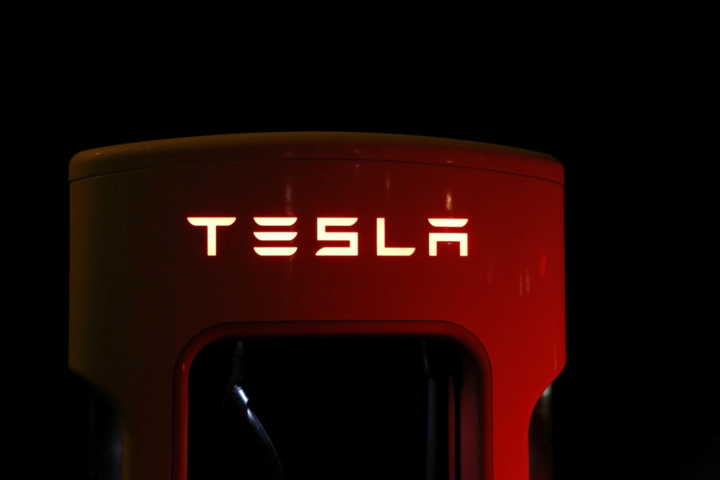
Investors should be aware of Tesla's stock forecast for several reasons:
Investment decision-making: Stock forecasts help investors make informed investment decisions. Investors can decide whether to buy, hold, or sell Tesla stock by understanding the company's projected growth trajectory.
Risk management: Stock forecasts can assist investors in assessing the potential risks of investing in Tesla. Investors can diversify their portfolios and manage their exposure to the company by understanding the expected volatility of the stock.
Capital allocation: Stock forecasts are used by investors to determine how much capital to allocate to Tesla. Investors can decide how much money to invest in the stock and how much to allocate to other investments by understanding the company's projected growth trajectory.
2022 Review of Tesla Stock Performance and Metrics
Tesla had reached a high of just over $402 at the start of 2022. However, as stock markets worldwide crashed, TSLA was not immune to the selling pressure. As a result, the stock fell to a low of just under $120. This was an astonishing move that wiped out a lot of overleveraged traders.
During the fiscal year 2022, Tesla's revenue grew 51%, to a total of $81.5 billion. The largest market for Tesla remained in the United States. Tesla's gross margin for 2022 increased to 28.5%, which shows that the company is getting more efficient over time. Its operating margin came in at 16.76%, lending to its net income of $12.5 billion.
During that same period, Tesla had a free cash flow of $8.502 billion, a 124.5% increase from the previous year. The earnings per share for TSLA was $1.19 for the year, making for a market cap almost 11 times General Motors and 12 times larger than Ford. The price-to-sales ratio fell throughout 2022, ending at 5.2 by New Year's. The price-to-earnings ratio is over 46 during the latest company announcement and has historically been stronger than competitors. Most P/E ratios for US auto manufacturers seem to hover around 10.25 times.
Tesla had 1.31 million vehicle deliveries in 2022, which is a growth of 40% from 2021 numbers. TSLA continues to lead in innovation in the electric vehicle space, particularly against other US-based companies. This trend has much to do with why the P/E ratio has historically been high over the last several years.
Risks and Challenges
While Tesla is a great company overall, it is not without its risks and challenges. Some of the most critical risks and challenges are listed below.

Supply Chain Disruptions
Tesla, like any other company reliant on a global supply chain, could face a variety of supply chain issues. Tesla may encounter the following supply chain issues:
Raw material scarcity: Tesla manufactures its electric vehicles using various raw materials, including lithium, nickel, and cobalt. Shortages of these materials may impact production and raise costs.
Transportation disruptions: Transportation disruptions, such as port congestion, logistics issues, or transportation strikes, could cause parts and components to be delivered late, impacting production schedules.
Supplier production delays: If Tesla's suppliers experience production delays or quality issues, Tesla's ability to manufacture vehicles on time may suffer.
Currency fluctuations: Because Tesla sources components and materials from suppliers worldwide, currency fluctuations may affect the cost of these inputs and, as a result, Tesla's profitability.
Geopolitical risks: Political instability or conflict in regions where Tesla sources components could impact the availability and cost of these inputs.
Overall, managing supply chain risks is essential to Tesla's operations. The company will likely have contingency plans to address these and other potential supply chain issues. That being said, flexibility will continue to be paramount for the company if it wishes to prosper.
Regulatory and Policy-Based Risks

As a company in the automotive and renewable energy industries, Tesla faces several regulatory and policy risks that could impact its operations and financial performance. Here are some regulatory and policy-related risks for Tesla:
Environmental regulations: Tesla's business is heavily reliant on regulations and policies that promote renewable energy and carbon reduction. Environmental regulations or a lack of regulatory support for renewable energy could impact Tesla's product demand.
Safety regulations: Tesla is subject to safety regulations related to vehicle design, manufacturing, and performance as an automaker. Noncompliance with safety regulations may result in fines or impact consumer trust in the company.
Labor laws: As an employer, Tesla is subject to labor laws governing worker safety, wages, and working conditions. Noncompliance with labor regulations may result in penalties or damage to one's reputation.
Intellectual property laws: Tesla spends a lot of money on R&D and relies on intellectual property laws to protect its technology and designs. Changes in intellectual property laws, as well as infringement by competitors, could have an impact on Tesla's competitive advantage.
Overall, regulatory and policy-based risks are important to Tesla, and the company will likely have a team dedicated to monitoring and managing these risks.
Increasing Competition
Tesla is facing increasing competition from companies all over the world. The biggest prize of all will be the Chinese landscape, which has numerous EV makers competing with Tesla. Some of these include BYD, NIO, and SAIC. All of these companies have a significant foothold in China, but it isn't just China that is going to be tough.
Many of the major manufacturers in the US are joining the EV revolution as well and already have the distribution network in place to become significant players in the market. Japanese and European automakers are also joining in the market as well. All of these companies could start to take market share, increasing the impact of Tesla's market competitors on its stock price in 2023.
2023 Expectations for TSLA Stock

The future outlook for Tesla stock in 2023 will be determined by external pressures such as the overall health of the stock markets, but what experts think about the Tesla stock price in 2023 is overall bullish, but not as bullish as in the past. (This can be said about most of the stock market.)
Financial Performance Forecast
Predictions for Tesla stock price in 2023, but it is worth noting that as of April, the stock has gained over 60% from the lows. This flies in the face of the expected lower per-share earnings expected. You can find a bullish and bearish forecast depending on where you look.
Most analysts believe that Tesla will continue to gain ground but at a slower pace. The consensus is that Tesla earnings per share will grow to $5.66 for the year, with sales up 42% to $118.2 billion. Free cash flow is expected to be around $14 billion, and profit margins are expected to be 14%, down from 17%. Nonetheless, Tesla's stock growth potential in 2023 remains there. The main question is, “Is Tesla stock undervalued in 2023?” The jury is still out at this point, but it's worth noting that the market has been bullish so far.
Tesla Market Share Projection
While the exact figures are only a guesstimate, some analysts expect the automaker to surpass 5% of auto sales in the United States. It also is expected to be the leading automaker in luxury during the year.
Tesla is set to spend $3.6 billion more on expansion in Nevada alone, with a new manufacturing center for trucks and batteries. The company also plans on expanding in China and Germany during the year. Tesla has also inked a deal to expand operations in Mexico recently.
Technical Analysis
The Tesla technical analysis is mixed. Because of this, a Tesla stock price prediction must take the potential of volatility into account. The $200 level is an area that has been important multiple times, and even though the market has gained almost 70% at the time of writing, it's also worth noting that the market had fallen almost 75% before getting to that level. In other words, the volatility has plagued the market for some time, so it's challenging to determine whether the momentum will be with you. The future outlook for Tesla stock in 2023 is going to continue to be a mixed bag, as the overall health of the stock market is a big question after the selloff in 2022.
More likely than not, Tesla will move with the overall market. There has been a significant bullish bounce from extraordinarily oversold conditions, but at the $200 level, it was an area of previous resistance. If the market is to show any proclivity to continue rallying, it must move well above the $200 level, which could open up a move to the $300 level. However, the more resistance market participants see at $200, the more likely it is to pull back toward the $160 level, which should be supported. It would not be surprising to see Tesla drop to the $100 level again if that gives way. As far as buying or selling is concerned, the market must prove itself in one direction or the other before you become aggressive.
Tesla Stock Forecast 2024
Tesla, the leader in electric vehicles, has seen its share price fall nearly 65% from all-time highs to around $218 amid broader market headwinds for high-growth stocks and EV manufacturers. Tesla hopes to increase deliveries by more than 50% annually over the next few years on the back of new factories, rising capacity, and new models like the Cybertruck. If Tesla can maintain its dominance as the global EV market expands, achieve industry-leading margins on its technology, and succeed in areas like autonomy and energy, its stock could rebound to old highs. However, Tesla faces increasing competition, execution risks around capital-intensive growth, and uncertainty around demand if macro weakness persists. While the long-term outlook remains strong, underpinned by secular growth in electric vehicles, Tesla's guidance for 2024 is mixed - stock recovery could depend on avoiding missteps, demonstrating strong profits, and communicating a sustainable competitive advantage. Consensus analyst ratings lean toward continued outperformance but with more muted upside, with 2024 price targets averaging around $300.
Is Tesla a Good Stock to Buy?

Should I invest in Tesla stock in 2023? That's a personal choice, obviously, but there are some significant advantages that Tesla seems to enjoy.
Tesla has many competitive advantages in the EV industry, including innovative technology. Tesla has been a leader in the electric vehicle market for quite some time, and Elon Musk's constant desire to improve technology is certainly a major driver of the company itself. Because of this, it should be expected that Tesla will continue to innovate and perhaps even lead the entire sector.
Tesla has a strong brand built up over the last several years, making the stock one that has almost achieved “cult status.” Some traders do nothing but buy or sell options contracts in the TSLA market, making quite a nice living. Furthermore, financial channels in the United States tend to focus quite significantly on Tesla, and with Elon Musk acquiring Twitter, he keeps his name and the company brand forefront of the news.
Tesla is known for its service and support, which continues to improve over time. Complaints about slow customer service have dissipated as the company has grown over the last several years. Initially, this was a significant problem, but this may have resulted from massive growth in a short time.
What are the Ways to Trade Tesla Stock?
There are three different ways to trade TSLA for retail traders, each with its advantages and potential disadvantages.
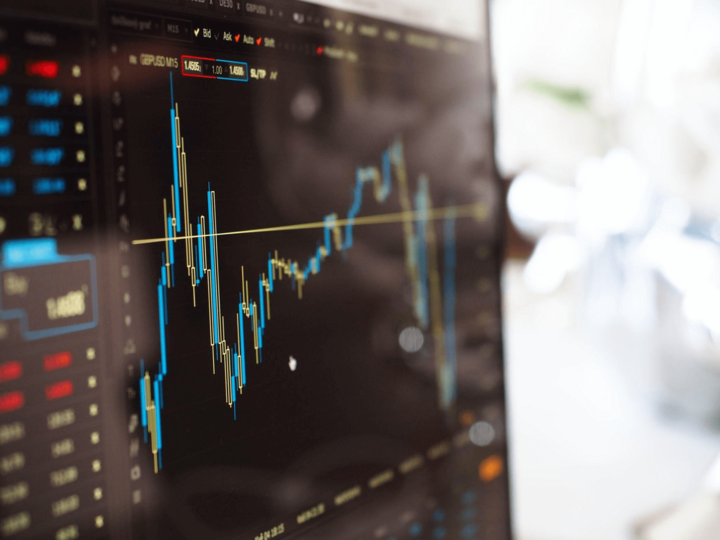
Hold Shares
This might be the simplest way to trade Tesla, but holding Tesla stock is difficult for some people because it tends to be very volatile. However, this is more of the traditional “long-term investor” type of approach, where you buy shares at what you think is a low price and hold onto them until they appreciate so that you can benefit from price appreciation.
Options Trading
Over the last several years, options trading has become much more popular. This is when you enter into a contract that gives you the right, but not the obligation, to take possession of the underlying stock. There is an expiration time attached to the contract, and traders essentially bet whether the price will be above or below what is known as the “strike price.”
Options trading can be very lucrative, but it can also be very dangerous as the leverage is very high, and of course, there are other things to concern yourself with, such as time decay. As the contract gets closer to the expiration date, it will see wild fluctuations in the option's value. Options trading is inherently risky because of the leverage involved, especially if you are “selling options.”
CFD Trading
CFD trading, or “Contract-for-difference” trading, involves agreeing with the counterparty to pay the difference from the entry price to the exit price. CFD markets allow you to easily short a market as well, giving you the possibility of earning when the price drops. Although this can be done with options, it becomes quite a bit more complicated. Furthermore, the CFD market will allow you to tailor the position size. Options trading blocks of 100 shares, so with a wildly volatile market like Tesla, they can become quite expensive. CFD trading allows you to trade a minimal amount or even massive amounts depending on your desires. You can trade and make money from going long or short of the market, making them much more flexible.
CFD Trading vs. Stock Trading
The advantages of CFD trading over stock trading are numerous. The most obvious is that you can short-sell a stock without borrowing it. Borrowing a stock means going out into the marketplace, paying somebody to borrow its stock, and then promising to return it. While this all happens under the hood, it's not always easy to find stocks to borrow. Furthermore, there are costs involved.
The CFD market also has the advantage of not needing actually to own the stock. In other words, you are simply speculating on the price without the hassle of stock ownership. While investors may not see this as an issue, somebody who is more like a trader will understand that it simply makes things much easier.
Finally, CFD markets allow for leverage. If you were to get a margin account at a traditional brokerage, the largest amount of leverage would be 4 times your deposit. However, CFD trading brokers offer much more leverage, allowing you to benefit from more buying power than you would at a traditional brokerage firm.
Why Trade the Tesla CFD Market with VSTAR?
VSTAR offers the Tesla CFD and an easy-to-operate platform called Metatrader 5, the favorite of retail traders worldwide. They are regulated and licensed, and have plenty of liquidity backing the brokerage. VSTAR continues to improve its backend while offering education and extra benefits to retail traders worldwide. With VSTAR, you have a partner that offers quick execution in some of the most liquid markets in the world.
Conclusion
In conclusion, Tesla has proven to be a leader in the electric vehicle and clean energy industries. Despite the stock's volatility, its consistent growth and innovation have made it a popular choice among retail and institutional investors. With projected growth in revenue and market share, Tesla appears to have a promising future ahead.
However, investors must also be aware of the risks and challenges that the company faces, including supply chain disruptions, regulatory and policy-based risks, and increasing competition from both established and emerging automakers. Flexibility and adaptability will be key to Tesla's continued success.
As for trading Tesla stock, there are various options available for retail traders, including holding shares, options trading, and CFD trading. Each method has its advantages and potential drawbacks, so investors should carefully consider which approach best suits their needs and risk tolerance.
VSTAR offers a user-friendly platform and a regulated and licensed environment for those interested in trading Tesla CFDs. In the ever-changing landscape of the electric vehicle market, Tesla remains an exciting and dynamic stock to watch and trade.
*Disclaimer: The content of this article is for learning purposes only and does not represent the official position of VSTAR, nor can it be used as investment advice.
